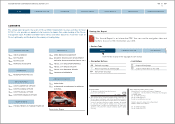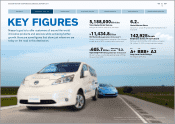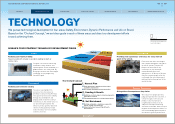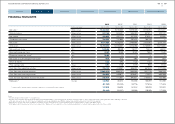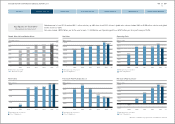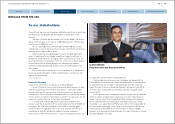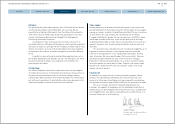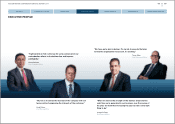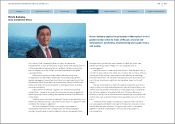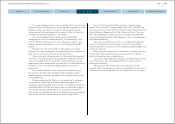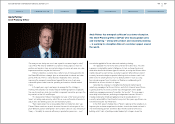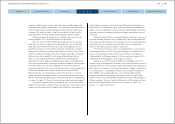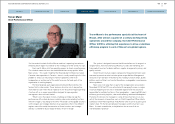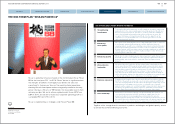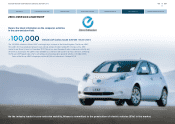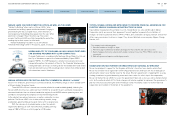Nissan 2014 Annual Report Download - page 11
Download and view the complete annual report
Please find page 11 of the 2014 Nissan annual report below. You can navigate through the pages in the report by either clicking on the pages listed below, or by using the keyword search tool below to find specific information within the annual report.
Hiroto Saikawa
Chief Competitive Officer
In his role as Chief Competitive Officer, he seeks to improve the
competitiveness in each of these areas. As part of that wide-ranging task, he
is also responsible for delivering Nissan’s platform strategy, its powertrain
plans, the expansion of the Group’s manufacturing footprint and global
sourcing activities.
Saikawa assumed these responsibilities following a high-level
re-organization last November. Additionally, the company expanded the
regional management committees from three to six, each reporting to Chief
Performance Officer Trevor Mann, and named Andy Palmer Chief Planning
Officer with duties to include new growth-market opportunities, branding,
pricing and marketing.
Saikawa, Mann and Palmer - together with Chief Financial Officer
Joseph Peter – comprise the senior four-man executive team charged with
executing Nissan’s overall strategy and reporting to Group Chief Executive
Carlos Ghosn.
“Together we co-ordinate and implement the day-to-day operations in an
efficient and effective manner,” says Saikawa. “Our duty is to support the CEO
and deliver the company’s objectives.”
The Chief Competitive Officer is no stranger to the weight of
responsibility. Before last year’s reorganization, he already had global
oversight for purchasing as well as leading the Nissan management team
throughout Asia, including the major markets of Japan and China. Now,
delivering the Group-wide strategy, he is focusing particularly on
cost-management.
Significant action is underway to lower Nissan’s Total delivered Cost, or
‘net TdC’ for every vehicle. This metric aims to reduce the unit-costs at Nissan
in every part of the business from production and planning to technology,
feature enhancements, raw materials and regulatory costs. By lowering such
costs, Nissan should see a significant and immediate impact on its profit
margins.
“We are now driving to an ideal TdC, seeking an optimum level of cost
control in areas including localized production, manufacturing efficiency, raw
material sourcing and the entire efficiency of the supply chain, including tier
two and three suppliers,” according to Saikawa. “Of course Monozukuri-
efficiency is the key, but to achieve total cost evolution, we must perform well
in other areas such as product-feature costs, regulatory costs, and warranty
costs.”
A network of TdC leaders has been put in place to make sure these
costs are properly controlled in every part of the business, focused on more
than 20 different areas of activity. This group-wide scrutiny is also being
applied to individual model programs, ensuring that every product is
cost-competitive.
Hiroto Saikawa applies the principles of Monozukuri to four
global functions that he leads at Nissan: research and
development, purchasing, manufacturing and supply chains,
and quality.
10
NISSAN MOTOR CORPORATION ANNUAL REPORT 2014
EXECUTIVE PROFILE
CONTENTS
CORPORATE FACE TIME
PERFORMANCE
CEO MESSAGE
NISSAN POWER 88
CORPORATE GOVERNANCE


